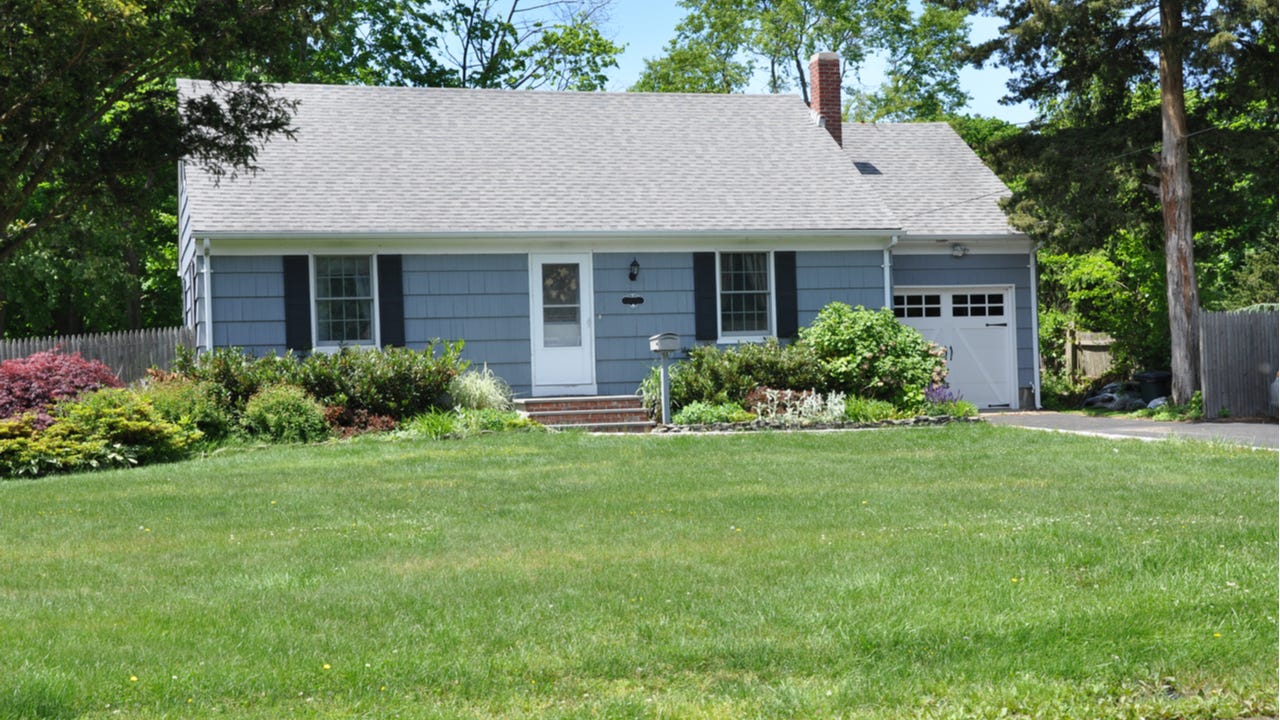How to remove mortgage insurance on an FHA loan

The Bankrate promise
At Bankrate we strive to help you make smarter financial decisions. While we adhere to strict , this post may contain references to products from our partners. Here's an explanation for .
Key takeaways
- The ability to remove FHA mortgage insurance (MIP) depends on when you took out your loan and size of your down payment.
- If you got your FHA loan after the year 2000, you might be able to cancel FHA mortgage insurance in certain cases. If you got your loan before 2000, you’ll continue to pay the premiums in most cases.
- If your loan doesn't qualify for automatic cancelation, refinancing is your main option for eliminating MIP.
If you have an FHA loan, you might be wondering how to get rid of the FHA mortgage insurance premiums (MIP). Unlike conventional loans, FHA loans require you to pay mortgage insurance premiums regardless of the amount of your down payment. Canceling these premiums can be challenging, but not impossible. Here’s how to get rid of FHA mortgage insurance premiums (and when you can’t).
Step-by-step guide to removing FHA mortgage insurance
1. Check your eligibility
“There are a number of factors that come into play when determining whether or not the FHA mortgage insurance can be canceled,” says Alan Aldinger, vice president of Media Relations for PNC Bank. “The biggest factor is when the case number was assigned for a borrower’s current FHA loan.” Case numbers are assigned when the loan originates. So basically: when you took out the loan.
Here’s how eligibility for FHA mortgage insurance premium removal breaks down by loan origination date:
- If your origination date was between July 1991 and December 2000, you can’t cancel your FHA mortgage insurance premiums. You’ll need to keep paying them for the life of the loan.
- If your origination date was between January 2001 and June 3, 2013, your MIP will be canceled when you reach a loan-to-value ratio (LTV) of 78 percent.
- If your origination date was after June 3, 2013 and you made a down payment of at least 10 percent, your MIP will be canceled after 11 years. For down payments of less than 10 percent, you’ll pay MIPs for the life of the loan.
2. Understand your options
There are two primary ways to eliminate mortgage insurance from an FHA loan:
Wait for automatic removal (if eligible)
If you meet the eligibility requirements to remove MIP from an FHA loan, your mortgage servicer should automatically cancel the premiums once you meet the criteria ( a 78 percent LTV or 11 years, depending on the loan). That’s assuming you’re in good standing with a record of on-time mortgage payments. If the premiums haven’t been canceled, contact your servicer.
Refinance to a conventional loan
If you don’t qualify for automatic removal — or you do, but want to lose the MIP sooner — you might consider refinancing your FHA loan to a conventional loan. Here are a few key considerations:
- Interest rates: Are current refinance rates lower now than they were when you got your FHA loan? In general, it make sense to refinance if you can take off half to three-quarters of a percentage point in rate.
- Credit score: What does your credit look like now versus what it looked like when you took out your FHA loan? If you’ve improved it, you might qualify for a conventional loan with a better rate and no private mortgage insurance (PMI) if your LTV ratio is 80 percent or less.
- LTV ratio: A loan-to-value (LTV) ratio is a mortgage balance divided by the value of the property, and it influences your ability to refinance, as well as the need for PMI. So, in addition to how much you’ve paid on your FHA loan, take stock of the value of your home. Is it worth more today due to rising property values or a major renovation you’ve made? If so, it’ll lower your LTV ratio — and the lower the LTV, the stronger a candidate you are.
- Refinance closing costs: You’ll need to pay closing costs to refinance, so do the math: Will the upfront cost of refinancing be worth the savings in the long run? Our mortgage refinance calculator can help you see how long it’d take to break even and then start profiting from the refi.
3. Contact your servicer
If your loan isn’t eligible for MIP cancellation, it’s worth contacting your servicer anyway, especially if you’re having trouble making payments. Your servicer can help you explore a loan modification or other options.
What happens after removing mortgage insurance?
Your monthly mortgage payment goes down, obviously. MIPs range in cost from 0.15 percent to 0.75 percent of your loan principal, depending on how much you borrowed and the loan’s term. Most borrowers pay 0.55 percent.
It’s small but it adds up: Say you bought a $340,000 home with the minimum 3.5 percent down ($11,900) on a 30-year FHA loan. Your monthly payments would be around $150.
Say you do eliminate the MIP. You could put that money toward emergency savings or another financial goal. Or you might opt to pay down the principal on your mortgage. This’ll help reduce your total interest and pay off your loan faster.
Should you remove MIP from an FHA loan?
At first glance, getting rid of your MIP seems like a no-brainer. However, if you’re considering refinancing just to remove MIP, think it through.
For one thing, you might still need to pay mortgage insurance on the new loan. With a conventional loan, you’ll need to pay private mortgage insurance (PMI) as it’s called, if your LTV ratio is 80 percent or higher — and that PMI could be pricier than your FHA MIP.
On the other hand, PMI is easier to get rid of. You can request to cancel PMI on a conventional loan after you reach 20 percent equity in the home. Plus, the Homeowners Protection Act mandates that your mortgage lender or servicer automatically terminate PMI when your loan-to-value ratio — that is, your mortgage balance — reaches 78 percent of the home’s purchase price.
Also cast an eye on how expensive your new mortgage is going to be. If refinancing reduces your monthly payments and total interest, that could more than make up for paying the premiums. But if refinancing increases your interest rate and payments, it wouldn’t be worth it. So, crunch the numbers carefully.
FAQ
-
FHA loans are insured by the Federal Home Administration (FHA) — meaning, should the borrower default on the mortgage, the FHA reimburses the lender the outstanding balance. This FHA backing is what encourages lenders to provide financing to borrowers who have lower credit scores, can’t manage a 20 percent down payment or who might not otherwise meet the lender’s criteria. The FHA mortgage insurance premiums you’re charged go towards paying for the FHA’s coverage. So, although borrowers pay for it, FHA mortgage insurance actually protects the lenders, covering their risk for issuing the loan.
-
Possibly. You might be able to reduce FHA MIP by refinancing to another FHA loan at a lower LTV ratio. If not, know that the U.S. Department of Housing and Urban Development, which oversees FHA loans, lowered FHA mortgage insurance premiums in 2023. This reduction applies to 30-year FHA loans originated, but not yet closed, on or after Jan. 26, 2015. If you obtained your FHA loan before then, contact your servicer to learn your options.
-
It depends on what type of refi. FHA cash-out refis still incur MIP. Conventional ones and VA ones don’t, provided you have enough equity built up in the home — generally, 20 percent of its overall value. But you’d have to ensure you’d be able to maintain that amount, even with your cash takeaway.
-
That depends on how much equity you have. If you have a home equity stake worth 20 percent or more of the home’s value, you won’t need to pay PMI.
Related Articles



